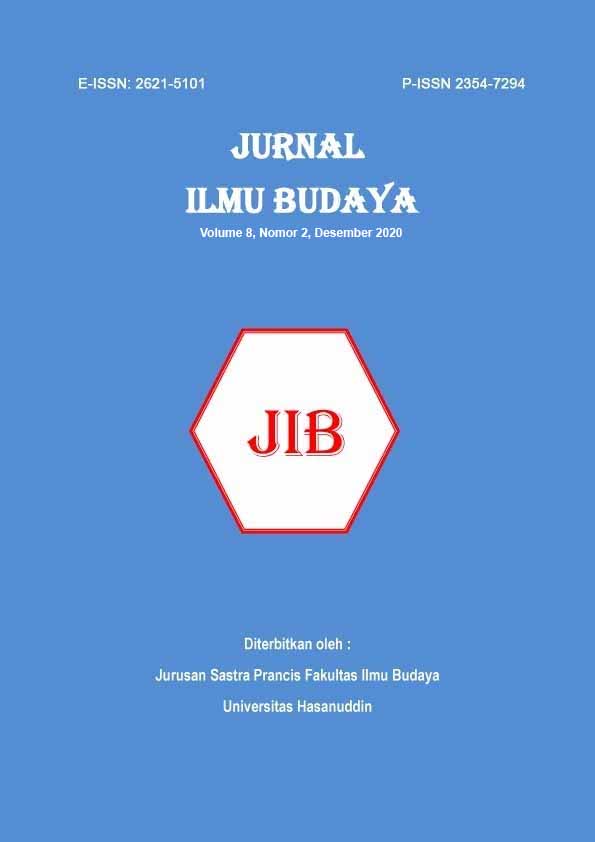SISTEM LABORATORIUM BAHASA DI DALAM WHATSAPP MESSENGER
DOI:
https://doi.org/10.34050/jib.v8i2.10981Keywords:
WhatsApp Messenger, language laboratories system, virtualizationAbstract
By the research and development (R&D) method designed by Nicolas Guichon (2007)), this scientific paper lists and describes the features of the free WhatsApp Messenger apps version 2.20.193.9 (released by WhatsApp Inc.) which is then analyzed using the theory of a language laboratory system made by Alfred S. Hayes for later analysis results are used to develop a virtual language laboratory manual. The purpose of this paper is to find out the features of the Whatsapp Messenger version 2.20.193.9 application that can be used for virtual language laboratories and also to develop its manual. Based on the results of the analysis that the author has done, the features that can be used for virtual language laboratories are the chat group, message, voice message, voice call, voice-video call, document delivery (voice document, video, text). The results of this study will be used for the development of the virtual language laboratories manual and are also expected to a topic of discussion among researchers and practitioners in the field of foreign language education and teaching.
References
DAFTAR PUSTAKA
(2016). Lampiran Peraturan Rektor Universitas Hasanuddin Nomor: 51868/UN4.1/PR.04/2016 tentang Rencana Strategis Universitas Hasanuddin Tahun 2016-2020 (Revisi). Makassar.
Badan Pengembangan dan Pembinaan Bahasa. (2019). Kamus Besar Bahasa Indonesia (KBBI) (Kamus versi online/daring (dalam jaringan)). Diambil kembali dari https://kbbi.web.id: https://kbbi.web.id/laboratorium
Bonuccelli, G. (2017, September 26). Industry 4.0 and Application Virtualization. Dipetik Januari 19, 2020, dari Parallels: https://www.parallels.com/blogs/ras/industry-4-0/
Cetinkaya, L. (2017). The Impact of Whatsapp Use on Success in Education Process. The International Review of Research in Open and Distributed Learning, 18(7). doi:doi.org/10.19173/irrodl.v18i7.3279
Fotos, S., & Browne, C. (2004). The Development of CALL and Current Option. Dalam S. Fotos, & C. Browne, New Perspective on CALL for Second Language Classrooms (hal. 12). New York: Routledge.
Garcia, N., & Wolff, L. (2001, November-Desember). https://web.archive.org/. Diambil kembali dari http://www.techknowlogia.org:
Gon, S., & Rawekar, A. (2017). Effectivity of E-Learning through Whatsapp as a Teaching Learning Tool. MVP Journal of Medical Sciences, 4(1), 19-25.
Guichon, N. (2007). Recherche-développement et didactique des langues. Recherches en didactique des langues et des cultures , 4. doi:10.4000/rdlc.4903
Hamad, M. (2017). Using WhatsApp to Enhance Students' Learning of English "Experience to Share". Higher Education Studies, 7(4), 74-87. doi:10/5539/hes.v7n4p74
Hayes, A. S. (1963). Language Laboratory Facilities: Technical Guide for the Selection, Purchase, Use, and Maintenance. U.S. Department of Health, Education, and Welfare Office of Education.
Hess, K., & Newman, A. (2010). Practical Virtualization Solutions. Boston: Pearson Education Inc.
Kustijono, R., & Zuhri, F. (2018). The use of Facebook and WhatsApp application in learning process of physics to train students’ critical thinking skills. IOP Conference Series: Materials Science and Engineering 296. IOP Publishing. doi:10.1088/1757-899X/296/1/012025
Larousse. (2020). Larousse. Diambil kembali dari https://www.larousse.fr/: https://www.larousse.fr/dictionnaires/francais/laboratoire/45786?q=laboratoire#45723
McCarty, S., Sato, T., & Obari, H. (2017). Implementing Mobile Language Learning Technologies in Japan. Singapore: Springer.
Oxford University Press. (2020). Oxxford Learner's Dictionaries. Diambil kembali dari https://www.oxfordlearnersdictionaries.com/: https://www.oxfordlearnersdictionaries.com/definition/english/language-laboratory
Platte, B. (2015, October 2). Teaching and Learning with Technology at Reed. Diambil kembali dari https://blogs.reed.edu/: https://blogs.reed.edu/ed-tech/2015/10/language-labs-a-brief-history/
Pusat Penerjemah. (-). Pusat Penerjemah. Diambil kembali dari https://pusatpenerjemah.id/: https://pusatpenerjemah.id/buku-manual-panduan-atau-manual-book-lebih-dari-satu-bahasa-kenapa/#
Robles, H., Guererero, J., Lilinás, H., & Montero, P. (2019). Online Teacher-Students Interaction using WhatsApp in a Law Course. Journal of Information Technology of Education Research, 18, 231-252.
Schawb, K. (2016). The Fourth Industrial Revolution. Switzerland: World Economic Forum.
Terrier, L., & Sirdey, C. V. (2011). L'acquisition raisonnée d'un laboratoire multimedia de langues: de la théorie à la pratique. Chaiers de l'APLIUT, 30(1), 42-59.
WhatsApp Inc. (2020). WhatsApp. Diambil kembali dari www.whatsapp.com: https://www.whatsapp.com/about/
Wikipedia Ensiklopedia Bebas. (2020). Diambil kembali dari https://id.wikipedia.org: https://id.wikipedia.org/wiki/WhatsApp#cite_note-13
Downloads
Published
Issue
Section
License
Copyright (c) 2020 JURNAL ILMU BUDAYA

This work is licensed under a Creative Commons Attribution-NonCommercial 4.0 International License.


